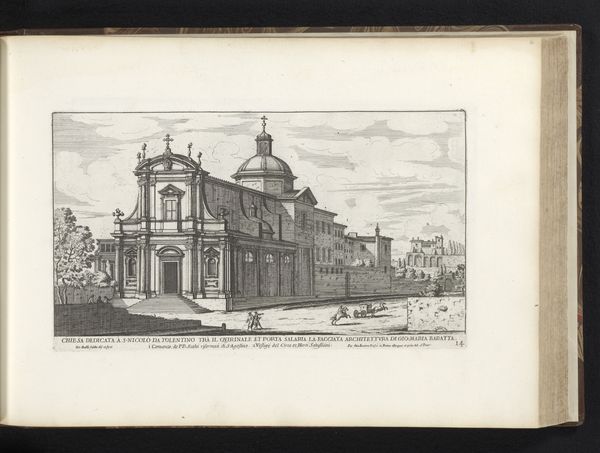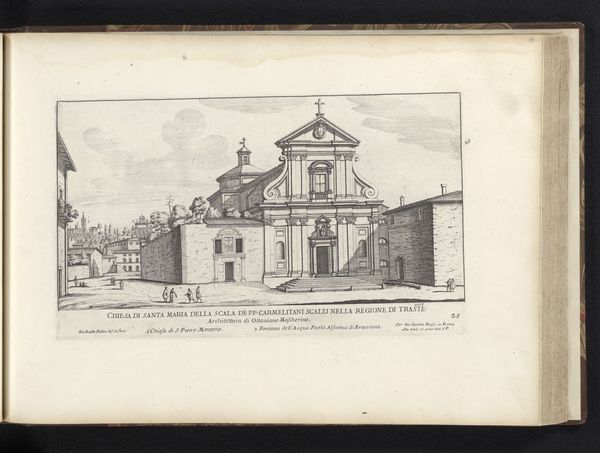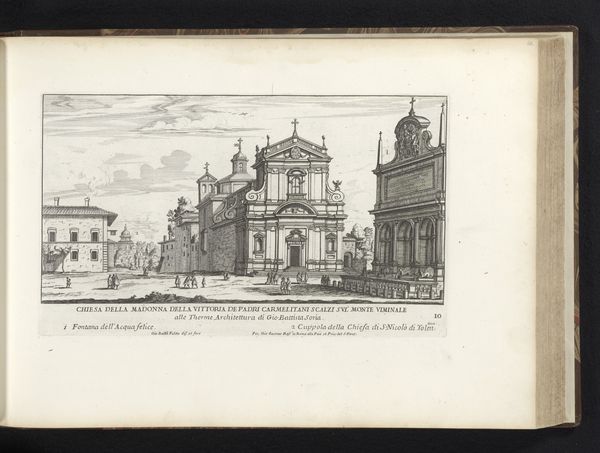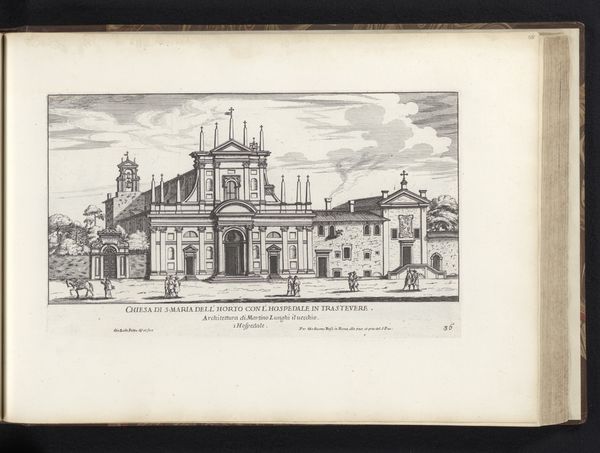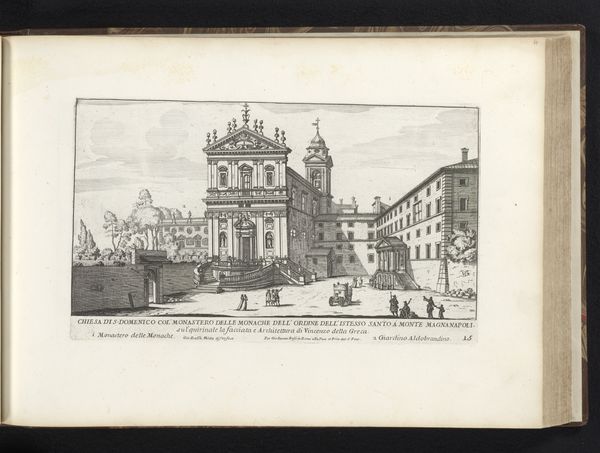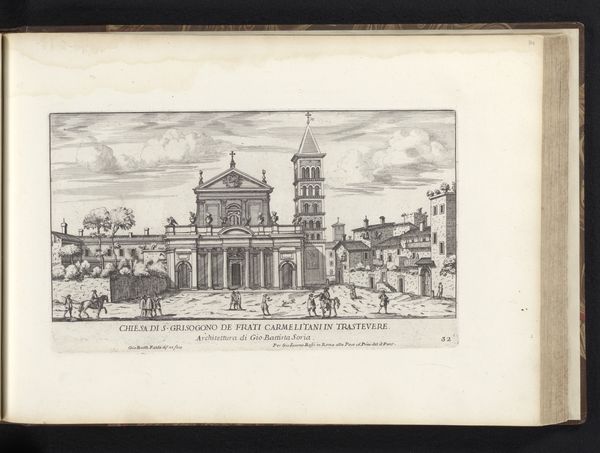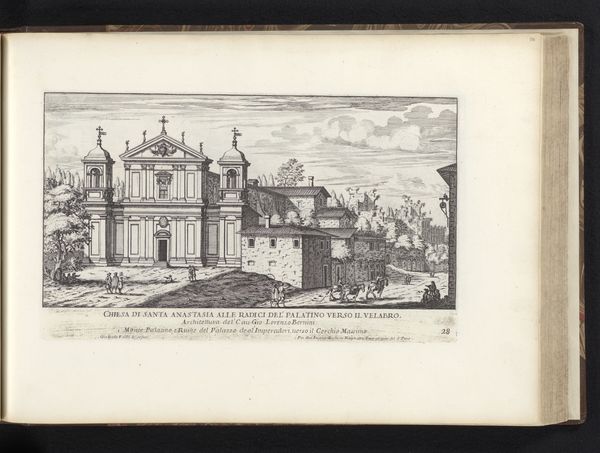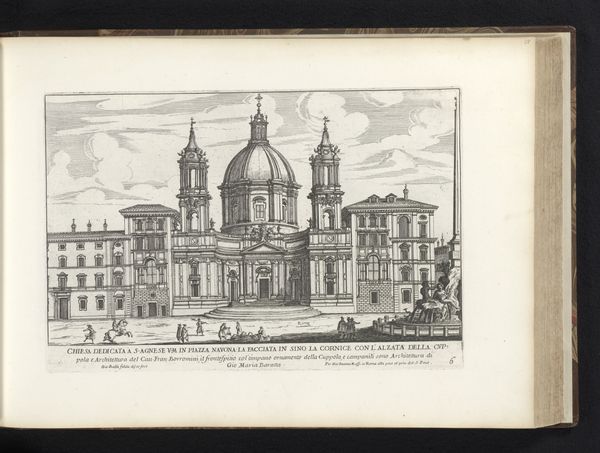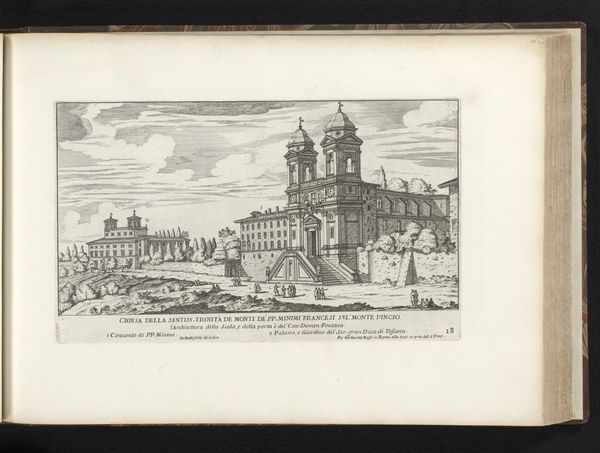
drawing, print, etching, pen, engraving, architecture
#
drawing
#
aged paper
#
baroque
#
mechanical pen drawing
# print
#
etching
#
old engraving style
#
sketch book
#
personal sketchbook
#
pen-ink sketch
#
pen and pencil
#
pen work
#
sketchbook drawing
#
pen
#
cityscape
#
italian-renaissance
#
sketchbook art
#
engraving
#
architecture
Dimensions: height 168 mm, width 291 mm
Copyright: Rijks Museum: Open Domain
Curator: Look at this intricate print; Giovanni Battista Falda’s "Chiesa di Santa Maria ai Monti te Rome", dating back to 1669-1670. It is held at the Rijksmuseum. What is your first impression? Editor: There's a certain coolness, an objectivity to this depiction of the church. The lines are so precise, giving a strong sense of architectural accuracy. It's very controlled and meticulous. Curator: Absolutely, this was likely intended to circulate amongst architects and patrons. Falda documented Roman architecture and urban spaces to showcase papal ambitions of the time. These kinds of prints helped disseminate the Baroque style and enhance the pope's prestige. Editor: I see echoes of Renaissance ideals in the symmetrical facade and the commanding dome, yet that theatrical play of light and shadow feels very Baroque. Is the Madonna dei Monti particularly significant? Curator: The church, consecrated to the Virgin Mary, was located in a densely populated and relatively poor district of Rome. Rebuilding this particular site as a fine example of the architectural fashion was certainly aimed at reasserting religious influence in everyday life. The attention to this specific monument, as evidenced by its inclusion in Falda's publications, emphasizes its place in Baroque urban renewal programs. Editor: Thinking symbolically, a drawing, an engraving of a sacred site functions almost like a devotional image itself. The careful detailing of the architecture could serve to inspire awe and reinforce the Church’s grandeur, even for those who may never actually visit the place. The sharpness of the lines and the cleanliness almost reminds one of the unshakeable will of the Church to spread their message. Curator: Indeed. Also, let's not forget the very act of meticulously documenting Rome helped construct a certain image of the city itself—a sort of carefully curated spectacle for both local and foreign elites. This piece helps remind us that public art and architecture have always served ideological purposes. Editor: And visually speaking, notice how even small elements— the cross at the apex of the dome, or the lines that suggest a heavenward reach—create this implicit symbolic directive. One finds a lot of cultural information in the detail that Falda chooses to include in his prints. Curator: Ultimately, what we see is not just a church but also the embodiment of both religious and political will. Editor: Yes, Falda gives us a frozen moment in time that reveals enduring beliefs about faith, power, and cultural identity.
Comments
No comments
Be the first to comment and join the conversation on the ultimate creative platform.
